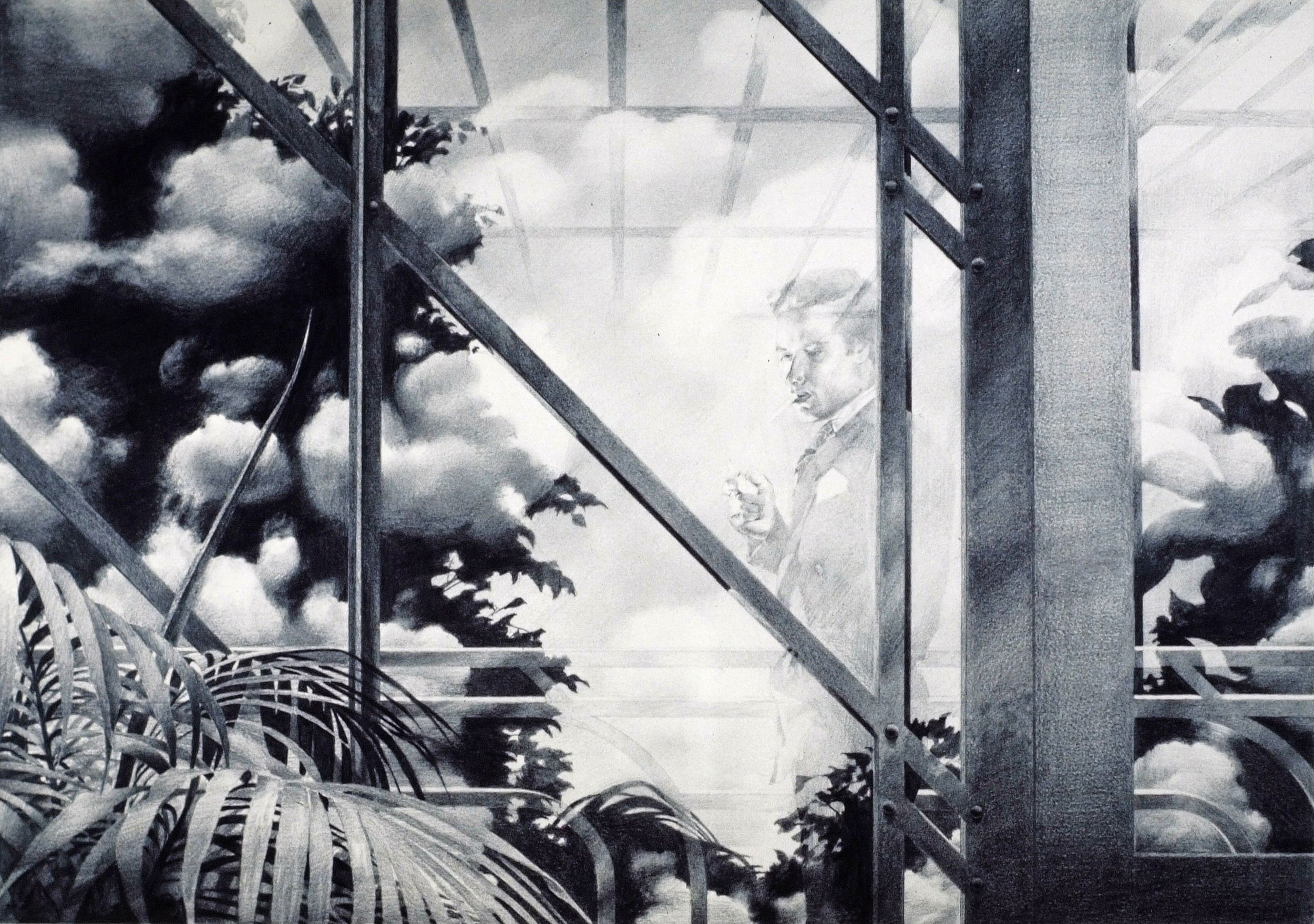In 1974 I began work on a series of graphite drawings on paper that were influenced by my interest in cinema, particularly black-and-white movies made during the classical period of Hollywood film production in the 1930s and 40s. As a youth I was drawn to the visual expression of these studio-made movies and to their characteristic tension between verisimilitude and artificiality. Since the Hollywood studio system in those days was rooted in a theatrical tradition, the studios customarily preferred to construct a studio replica rather than utilize actual locations. I loved – and still love – the stylized “look” of these productions with their expressive sets, precise lighting, and heightened textures. From a young age, I was fascinated by film stills taken by studio photographers that evoked a movie’s design and atmosphere. (I fondly remember the day that eerie images from Fritz Lang’s 1926 German sci-fi masterpiece, Metropolis, found their way into my young hands at a magazine stand in a rural South Dakota roadside café.) With the graphite drawings in this series, I wanted to create similarly vivid fantasies –– amusing, moody, mysterious, and surreal scenes that might be viewed as reminiscent of film stills. My constructed environments would be populated, here and there, by “borrowed” cinematic figures (on imaginary loan-out to me from some studio or other) cast in settings rich with details of décor, light and shadow, and narrative implications.
An imaginary conservatory of glass and steel is the recurring setting. I have often drawn these conservatories to appear elevated in the sky at some considerable but indeterminate height, evoking an intentional “floating world” quality. (In grade school I was obsessed with The Twenty-One Balloons, a 1947 young adult novel about a hot air balloon adventure written and illustrated by William Pène du Bois). The geometric architecture of my recurring greenhouse structures is entirely invented, and it typically marks the boundary of an overgrowth of plant life –– nature managed, bottled up, and artificially constrained. In stark contrast with the organic forms of plants, trees, and clouds is the 19th century industrial age rigidity of these enclosed hothouses. The greenhouse glass transmits and reflects light. Hints of moisture, surface reflections, and haze betray its invisibility and cloud its transparency. The drama behind the glass is both exposed and cloaked, and we are on the outside looking in as voyeurs (as we are when watching movies), while the characters in the greenhouses are inside looking out.
The riveted metal superstructure of each of these greenhouses offered me an opportunity for playful architectural invention on paper. However, that prominent geometry inevitably threatened to sabotage the drawing’s compositional unity. Each greenhouse structure posed this “musical” challenge: how to create a staccato rhythm of these hard architectural verticals, horizontals, and diagonals yet also move the viewer’s eye across these boundary lines in legato movements.
A sense of alienation and entrapment is evoked by the metal framework as it divides and partitions space. It frames different “scenes” that the viewer may edit together in a narrative as he or she wishes. The poses of several of the figures suggest contemplation, reinforced by the drift of clouds and light. Whimsically, I have cast as characters in these “frames” a few figures from cinema history (actors Julie Christie, Rita Hayworth, Greta Garbo, and – from film noir – Steve Brodie and Paul Valentine, along with two silent-era pioneers: Mack Sennett, founder of the first completely enclosed movie studio, Keystone Pictures, and director D.W. Griffith, the father of film language). I have co-mingled these cinema icons with some figures clipped from found photographs and with my representations of friends and my wife, Carol Hausser, who generously served as models.
Robert Bibler, April 25, 2018

















